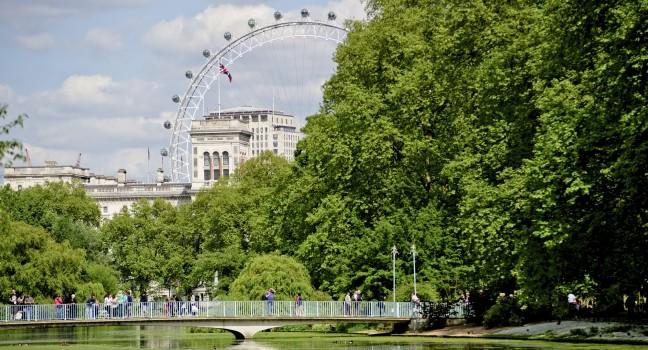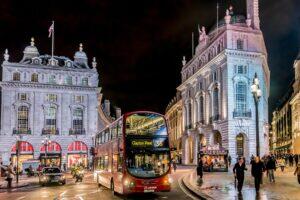Fodor's Expert Review St. James's Park

There is a story that, many years ago, a royal once inquired of a courtier how much it would cost to close St. James's Park to the public. "Only your crown, ma'am," came the reply. Bordered by three palaces—Buckingham, St. James's, and the governmental complex of the Palace of Westminster—this is one of London's loveliest green spaces. It's also the oldest; the former marshland was acquired by Henry VIII in 1532 as a nursery for his deer. Later, James I drained the land and installed an aviary, which gave Birdcage Walk its name, and a zoo (complete with crocodiles, camels, and an elephant). When Charles II returned from exile in France, where he had been hugely impressed by the splendor of the gardens at the Palace of Versailles, he transformed the park into formal gardens, with avenues, fruit orchards, and a canal. Lawns were grazed by goats, sheep, and deer, and, in the 18th century, the park became a different kind of hunting ground, for wealthy lotharios looking to pick up nighttime... READ MORE
There is a story that, many years ago, a royal once inquired of a courtier how much it would cost to close St. James's Park to the public. "Only your crown, ma'am," came the reply. Bordered by three palaces—Buckingham, St. James's, and the governmental complex of the Palace of Westminster—this is one of London's loveliest green spaces. It's also the oldest; the former marshland was acquired by Henry VIII in 1532 as a nursery for his deer. Later, James I drained the land and installed an aviary, which gave Birdcage Walk its name, and a zoo (complete with crocodiles, camels, and an elephant). When Charles II returned from exile in France, where he had been hugely impressed by the splendor of the gardens at the Palace of Versailles, he transformed the park into formal gardens, with avenues, fruit orchards, and a canal. Lawns were grazed by goats, sheep, and deer, and, in the 18th century, the park became a different kind of hunting ground, for wealthy lotharios looking to pick up nighttime escorts. A century later, John Nash redesigned the landscape in a more naturalistic, romantic style, and if you gaze down the lake toward Buckingham Palace, you could easily believe yourself to be on a country estate.
A large population of waterfowl—including pelicans, geese, ducks, and swans (which belong to the King)—breed on and around Duck Island at the east end of the lake. From March to October, the deck chairs (charge levied) come out, crammed with office workers at midday, eating lunch while being serenaded by music from the bandstands. One of the best times to stroll the leafy walkways is after dark, with Westminster Abbey and the Houses of Parliament rising above the floodlit lake.
READ LESS








